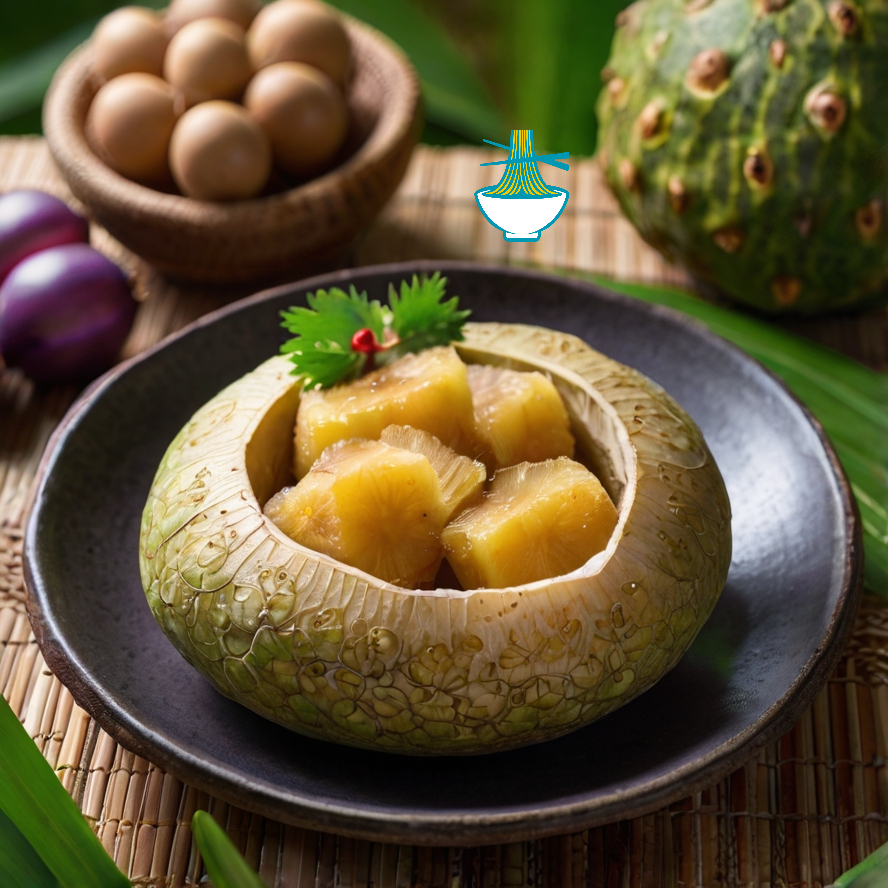Discover the rich flavors of Poi, a traditional Hawaiian dish made from pounded taro or breadfruit. This creamy and slightly tangy side dish is often paired with fish, offering a unique taste of Hawaiian cuisine. Learn how to prepare this classic recipe with step-by-step instructions and tips for achieving the perfect texture. Ideal for anyone interested in exploring authentic Hawaiian dishes!
Ingredients:
- 1 lb taro root (or breadfruit)
- Water (for boiling)
- Salt (to taste)
- 1-2 cups water or coconut milk (for consistency)
Instructions:
Prepare the Taro Root:
- Peel the taro root and cut it into small chunks.
Cook the Taro:
- Place the taro chunks in a large pot and cover with water.
- Bring to a boil, then reduce heat and simmer for about 30-40 minutes, or until the taro is tender and can be easily pierced with a fork.
Drain and Mash:
- Drain the cooked taro and place it in a large mixing bowl.
- Using a potato masher or fork, mash the taro until smooth.
Adjust Consistency:
- Gradually add water or coconut milk to the mashed taro, stirring continuously until you reach your desired consistency. Poi can be thick or slightly runny, depending on your preference.
Season:
- Add salt to taste and mix well.
Serve:
- Serve Poi warm or at room temperature. It pairs wonderfully with fish or as a side dish to various Hawaiian meals.
Tips:
- For a smoother texture, you can use a food processor instead of mashing by hand.
- Poi can be stored in the refrigerator for up to a week. If it thickens upon cooling, simply stir in a little water or coconut milk before serving.
Enjoy the taste of traditional Hawaiian cuisine with this delicious Poi recipe!
Nutritional values
Taro Root (1 lb, about 450 grams)
- Calories: About 142 kcal
- Carbohydrates: 34 grams
- Protein: 1.5 grams
- Fat: 0.2 grams
- Fiber: 5 grams
Benefits:
- Taro root is a good source of dietary fiber, which supports digestive health. It is rich in carbohydrates, providing energy, and contains a range of vitamins and minerals, including vitamin C, vitamin E, potassium, and magnesium. Its fiber content can help with blood sugar control and promote satiety.
Water (for boiling)
- Calories: 0 kcal
- Carbohydrates: 0 grams
- Protein: 0 grams
- Fat: 0 grams
Benefits:
- Water is essential for hydration, digestion, and maintaining bodily functions. It helps in cooking and preparing food without adding calories or fat.
Salt (to taste)
- Sodium content depends on the amount used.
Benefits:
- Salt is essential for maintaining fluid balance and proper nerve function, but it should be used in moderation to avoid excessive sodium intake.
Water or Coconut Milk (1-2 cups, for consistency)
Water:
- Calories: 0 kcal
- Carbohydrates: 0 grams
- Protein: 0 grams
- Fat: 0 grams
Coconut Milk (per 1 cup):
- Calories: About 445 kcal
- Carbohydrates: 6 grams
- Protein: 4 grams
- Fat: 48 grams (mostly saturated fat)
Benefits:
- Water: Hydrates and helps with the cooking process without adding calories or fat.
- Coconut Milk: Adds a rich, creamy texture and flavor to dishes. It contains healthy fats, including medium-chain triglycerides (MCTs), which can provide a quick source of energy. Coconut milk is also rich in vitamins C, E, and B vitamins, and minerals like iron and magnesium.
Combining these ingredients can create a nutritious dish with a creamy texture, offering a balance of carbohydrates, dietary fiber, and healthy fats. Taro root provides essential nutrients and energy, while coconut milk adds richness and flavor.


Comments